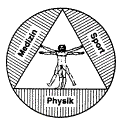
Dr. Thomas Obens • Tübingen•
| Startseite |
| Aktuell |
| Neue Ideen |
| Seminare |
| Sportschuhberatung |
| Wissenschaftliche Arbeiten |
| Dezentrale Fersenbelastung |
| Metatarsalgie |
| Sichelfußbehandlung |
| The influence of the shoe over the biomechanic of foot |
|
Organisationsleitung
E-Mail: |
|
Wilhelmstr. 134 |
THE INFLUENCE OF THE SHOE OVER THE BIOMECHANIC OF FOOT |
|||
|
N.L.
Becker and T. Obens
Privates Institut für angewandte Biomechanik, Tübingen - Private Institute for Applied Biomechanic - D-72074 Tübingen Wilhelmstr. 134 e-Mail: THWOBENS@AOL.COM |
|||
| Fig. 1:Plantar pressure distribution | |||
INTRODUCTIONThe foot and the shoe form a functional unit. The foot can handle the normal load during standing, walking and running because of its construction. The shoe has to minimize the stress for the foot during load. For this reason it is important for the foot not to be restricted in its physiological biomechanic behavior by the shoe. The purpose of the study was to compare biomechanic parameters of the foot with and without shoes. |
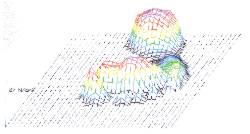 |
||
| a: barefoot on flat ground (physiological pressure distribution) | |||
METHODSWith plantar pressure distribution (emed-SF and pedar) computer tomography and NMR examination on feet (barefoot and wearing shoes), the differences in the behavior of the foot between these two circumstances could be proved. Therefore the pressure distribution by varying loads on the feet (during standing and walking) was measured as well as the position of anatomical structures of the foot on different grounds were determined. |
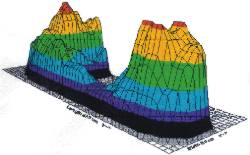 |
||
| b: inside a shoe with insole (over-load at the margin of the heel) | |||
RESULTSDuring vertical stress to the heel a physiological reduction of load is created by dissolving the soft tissue under the calcaneus. On flat ground the pressure distribution looks like a hemisphere (Fig. 1a). If the rear foot is narrowed by the heel cavity of shoe and/or insole, it is impossible for the soft tissue to dissolve. A wall is built at the margin of the heel. In pressure distribution a crater indicates the overload to the margin (Fig. 1b). |
|||
|
In shoes with a heel or with soft material in the midfoot region, a shank has to stabilise this region to prevent medial torsion and overpronation in rear- and midfoot. If this region is too weak, the foot gets torqued in a medial direction (Fig. 2), the naviculare switches inwards and the foot stands in overpronation in a flexing action during walking or running. |
Fig 2: Medial torsion of naviculare in weak shoes | ||
 |
|||
| a: CT examination on nearly unloaded foot (sitting) | b: CT examination on loaded foot (standing on one foot) | c: Diagram to illustrate movement of naviculare during loading Black = a, Red = b | |
|
In shoes with a heel or with soft material in the midfoot region, a shank has to stabilise this region to prevent medial torsion and overpronation in rear- and midfoot. If this region is too weak, the foot gets torqued in a medial direction (Fig. 2), the naviculare switches inwards and the foot stands in overpronation in a flexing action during walking or running. |
|||
|
During static and dynamic load to the foot the arched construction of the fore-foot get flattened down to the ground (Fig. 3a). Normally the ground is flat (without shoes), but in shoes a groove grounding is common. Because of this deformation of the foot (Fig. 3b), the anatomic footstructure gets overloaded and weakened by time. The foot can no longer reduce its load even under normal conditions. |
|||
| Fig. 3: Position of metatarsal heads during load | |||
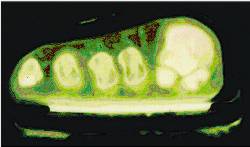 |
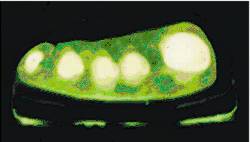 |
||
| a: on plan grounding - physiological | b: on groove grounding (in common shoes) - unphysiological deformation | ||
DISCUSSIONAs a result of the study, it must be mentioned that the shoe can change the biomechanic behavior of the foot in a dramatic way. The rear foot is narrowed by the heel cavity of the shoe and/or insole and is thereby loaded unphysioloically (maximum pressure on the margin instead of under the calcaneus). In the shoes with heel, the rear- and mid-foot get torqued in the area of the shank by the instability. The fore-foot structure collapses because of a unphysiological (groove-shaped) ground. These three examples of the complex behaviour of a foots biomechanics show that some shoes increase some parts of the load of the foot instead of decreasing them. Knowing the problems created for the foot by the shoe, it must be possible to change the construction of shoes in such a way that the physiological load reduction by the foot is integrated in the load reduction of the whole system containing ground, shoe and foot. |
|||
|
References
|
|||